6 Tips on How to Build Stairs: What You Need to Know
-
Codee Chessher
- Last updated:
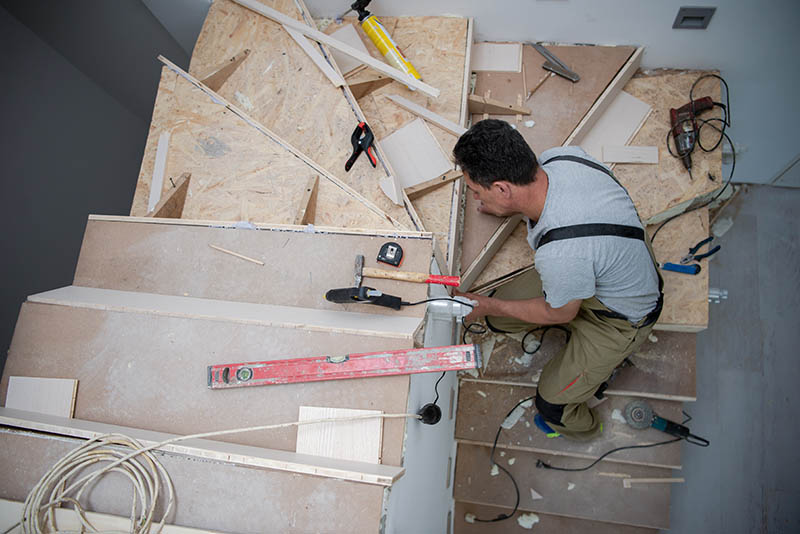
DIY home improvement projects can be small, but building a staircase is one of the more ambitious tasks you can undertake. It doesn’t seem that complex, but there’s a lot that goes into constructing a strong and sturdy stairway. Let’s check out some tips to help you complete your stairs in no time.
The 6 Tips on How to Build Stairs
1. Learn the Basics
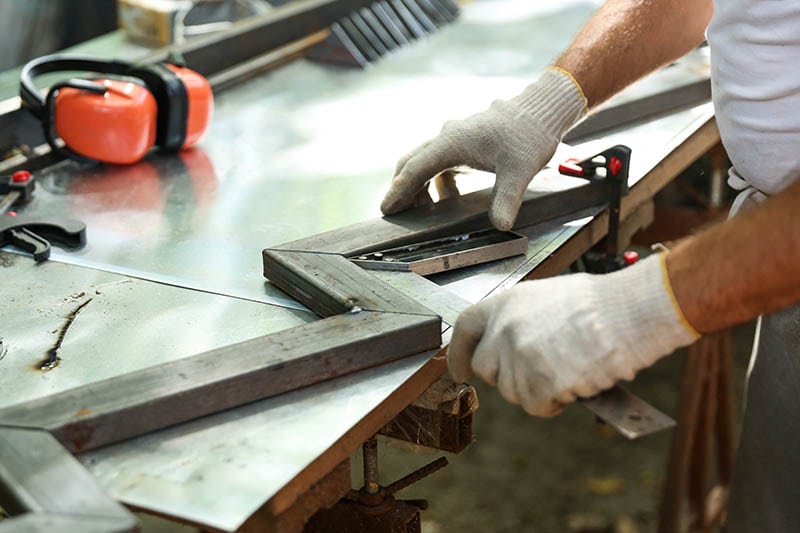
We all know what stairs are, but carpenters have a set of specialized terminology that describes the various parts involved. Let’s cover what these basic components are and why they’re important when you’re building stairs.
- Rise: the total height of the staircase from floor to top step
- Riser: the vertical boards in between each step
- Tread: the part of the stairs you step on, held in place by the stringers
- Stringers: the long-angled sides that hold the treads in place
- Head clearance: average head clearance for a staircase is 6–8 feet
- Nosing: some stairs hang a bit over the steps below – this is called the nosing
- Run: run is calculated by multiplying the number of treads by the depth of the treads and then adding it with nosing and riser thickness
2. Take Accurate Measurements
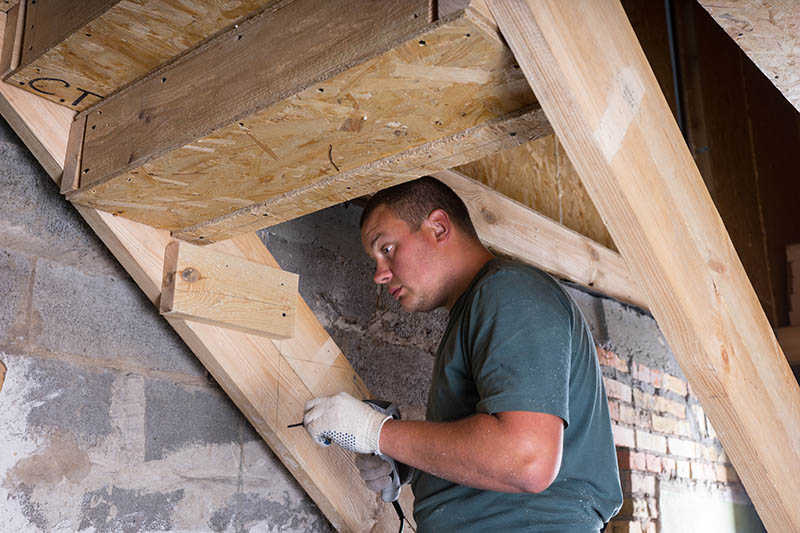
As with any construction project, building stairs requires precise measurements to ensure that everything fits together perfectly. Using rough or inaccurate measurements will lead to your stairs not fitting together correctly or your final result being an uneven, unsteady staircase you need to tear down and replace. You might also not buy enough materials, which would call for another trip to the hardware store.
Ideally, a professional would take your measurements. However, if you’re a DIY expert, at least have someone assist you in taking measurements. Have them double-check and confirm your measurements, which you’ll write down neatly for later reference.
3. Calculate Your Slope

Also called the “rise and run” of stairs, your slope is the walking angle that determines how steep your stairs are. It’s essential to consider the slope because you don’t want stairs that are too steep or difficult to climb, especially for children or seniors.
To calculate the standard stair slope used for most stairs, divide your total rise by 7—the result is your stair slope. We should mention that most stair slopes are between 30–70 degrees, and some localities have building codes that address what stair slope you must use. Always consult with local housing authorities to check if codes about stair slopes are applicable to your stair project.
4. Solid Stringers Make Solid Stairs

The hallmarks of a good staircase are that it’s comfortable to walk on and that it doesn’t make noise from wood moving. The effective foundation of your staircase will be your stringers, which are available for purchase in pre-cut sizes for convenience. If you insist on cutting your own stringers, use a circular saw and carpenter’s square to make sure your stringers are exact. Without stable stringers, the rest of your staircase is doomed from the start.
The most common size boards used for stringers are thick 2x12s, but you can cheat a bit with shorter stairs and use 2x10s.
5. Use Wood Glue to Craft Silent Stairs
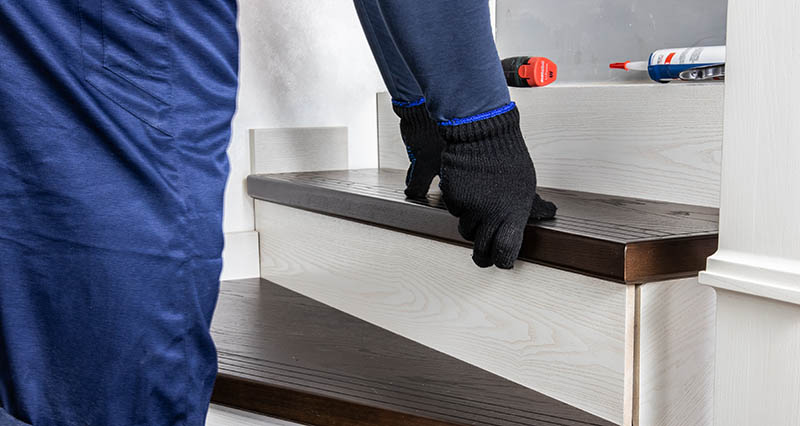
Judicious use of wood glue during your stair project can make a serviceable staircase into a marvel of DIY engineering. Using wood glue to secure every single joint will make their connections far more solid, which helps eliminate stair noise. However, making sure that your landing platform is securely attached to the surrounding walls is essential. You can use all the wood glue in Home Depot and your stairs will squeak unless you fix your shoddy landing platform.
6. Joining Treads and Risers
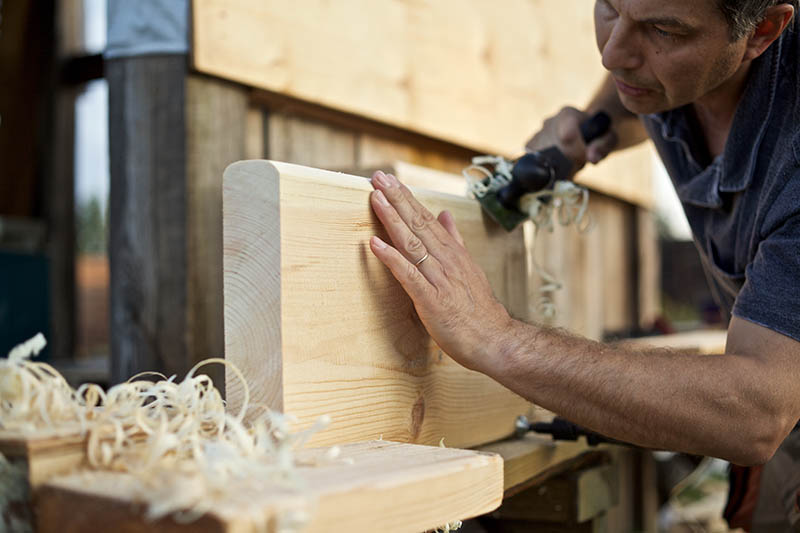
The first step is to join your risers or toe boards between each step, positioned vertically between your treads. Next, screw the treads to the stringers on each side with 2.5-inch wood screws, with at least an inch of the screw joining the wood. Risers are technically optional, but we recommend using them to help make extra-strong stairs. Don’t forget to use wood glue while joining your pieces either, because that will make a world of difference.
In Conclusion
Building stairs isn’t the most difficult project, but it requires some exact measurements and hard work. By using the tips you learned above, you can build a staircase that will last decades, if not your whole life. Just remember to use wood glue!
Featured Image Credit: dotshock, Shutterstock
Contents

